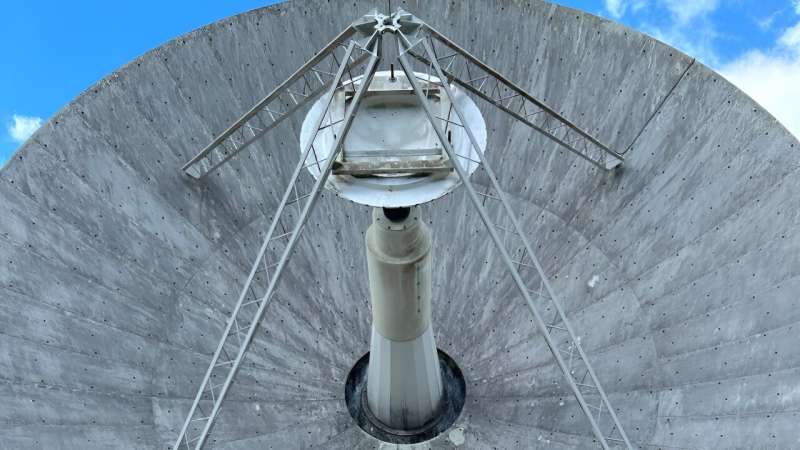Undergraduate students from the Enhancing and Nurturing Careers in Astronomy with New Training Opportunities (ENCANTO) program are one group that has conducted research using the Arecibo Observatory’s 12-meter telescope and its new cooled receiver. Credit: Anish Roshi
Constructed within a natural sinkhole in Puerto Rico, the 305-meter-wide Arecibo Telescope played a part in numerous discoveries, including the first detection of an exoplanet. It was the largest radio telescope in the United States from 1963 until it collapsed in 2020.
However, since 2011, the Arecibo Observatory has also been home to a second, smaller radio telescope. In a new Radio Science paper, researchers describe how recent updates to this 12-meter telescope expand possibilities for future discoveries.
The 12-meter telescope originally operated at a relatively narrow bandwidth of radio frequencies, limiting its applications. In addition, its receivers operated at room temperature, which resulted in noisier signals and lower sensitivity compared with telescopes with receivers cooled to cryogenic temperatures.
Now, the researchers have outfitted the 12-meter telescope with a new receiver system that operates at a significantly wider bandwidth (2.5–14 gigahertz) and is cooled to 15 K (-432°F).
In summer 2023, the newly outfitted telescope demonstrated its capabilities by making a number of space observations. These included detecting methylidyne emission from dark molecular clouds toward the center of our galaxy, observing a previously discovered pulsar, and capturing an image of a region of magnetic activity on the sun that produces intense solar flares.
With additional improvements planned, the 12-meter telescope at Arecibo could soon contribute to a wide range of future research and educational projects.
More information: D. Anish Roshi et al, A Cryogenic Wideband (2.5–14 GHz) Receiver System for the Arecibo Observatory 12 m Telescope, Radio Science (2024). DOI: 10.1029/2023RS007839
Provided by American Geophysical Union
This story is republished courtesy of Eos, hosted by the American Geophysical Union. Read the original story here.
























